Sealife guideThe rock beautyHolacanthus tricolor
Last updated on 09/02/2024 at 11:51 PM
Taxonomy
- Common name: Rock beauty
- French name: Poisson ange tricolore
- Scientific name: Holacanthus tricolor (Bloch, 1795)
- Family name: Pomacanthidae
- Order name: Acanthuriformes
- Class name: Actinopterygii
Description
The rock beauty has a morphology very characteristic of the angelfish family. This medium-sized fish measures about 12 inches in length.
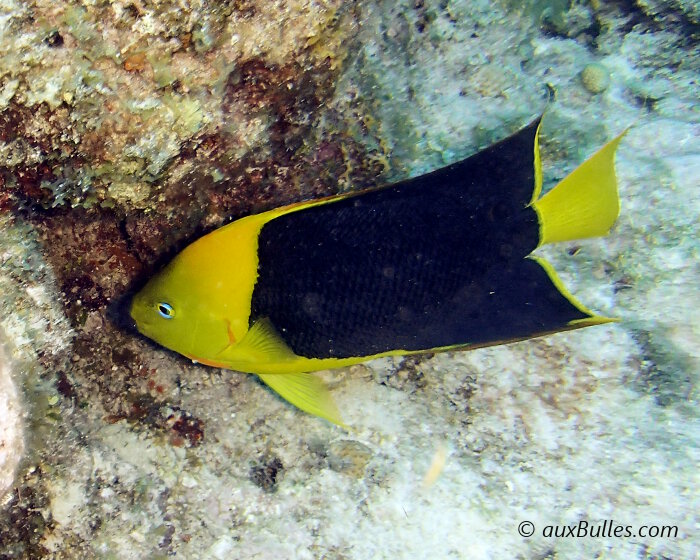
The rock beauty has a morphology characteristic of the angelfish family and a highly recognizable yellow and black coloration
The rock beauty has a distinct body shape: a flattened, disc-like form with continuous dorsal and anal fins extending from the top and bottom, bordered by a thin yellow edge, and tapering into sharp yellow points.
The rock beauty is easily recognizable by its striking yellow and black coloration. Its head and tail are yellow, with a fine yellow line tracing its body to highlight its silhouette. An orange and bluish tint colors the edges of its dorsal and anal fins.
As a juvenile, the rock beauty shares the same colors but with a different distribution. The body is entirely yellow with a round black mark on the upper part, encircled by a bluish ring. As it ages, the black spot spreads like ink on blotting paper, while the bluish ring fades and eventually disappears in adulthood.
Geographic range
The rock beauty can be found in the warm tropical waters of the western Atlantic, from Florida in the north to the coast of Brazil in the south. It is also present along the coasts of the Bahamas and the numerous islands bordering the Caribbean sea.
Habitat
The rock beauty inhabits clear, shallow tropical waters near coral reefs or rocky reefs, from the surface down to a depth of 300 feet.
This species is diurnal: active during the day, it sleeps at night, sheltered from predators within the reef. Territorial by nature, the rock beauty usually lives alone or in pairs.
Diet
The rock beauty primarily feeds on sponges but occasionally supplements its diet with algae and invertebrates, such as gorgonian polyps.
Reproduction
The rock beauty is oviparous and reproduces sexually.
Did you know ?
Since 2010, the rock beauty has been listed on the IUCN Red List, but under the category of Least Concern due to its large population and distribution.
Tips for observing
The rock beauty is not easily approached, and one must move slowly and avoid sudden movements to get a close look at it !
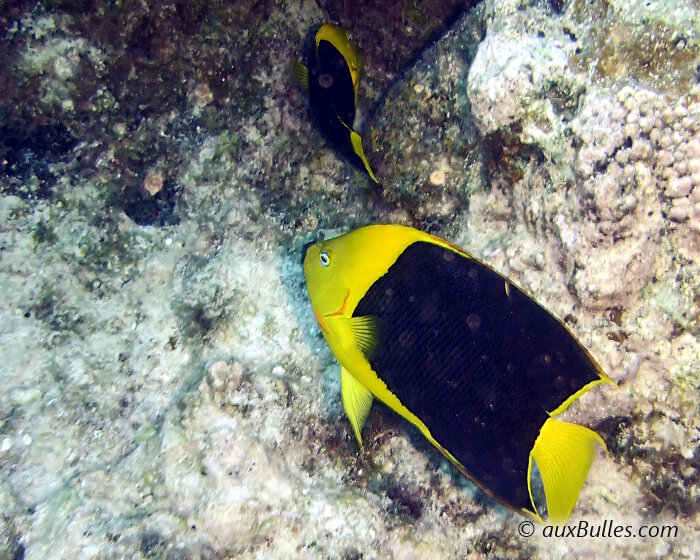
The rock beauty inhabits clear, shallow tropical waters around coral reefs or rocky reefs
Within the same genus
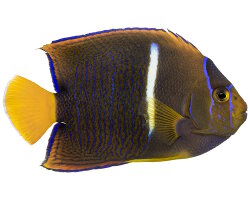
Passer angelfish
(Holacanthus passer)
(Holacanthus passer)
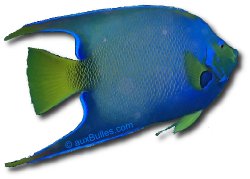
Queen angelfish
(Holacanthus ciliaris)
(Holacanthus ciliaris)
Within the same family
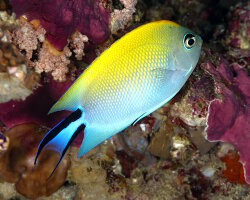
Black-spot angelfish
(Genicanthus melanospilos)
(Genicanthus melanospilos)
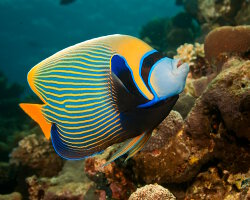
Emperor angelfish
(Pomacanthus imperator)
(Pomacanthus imperator)
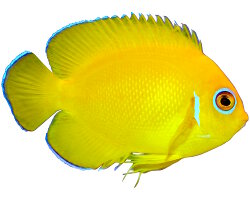
Lemonpeel angelfish
(Centropyge flavissima)
(Centropyge flavissima)
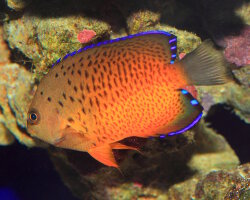
Rusty angelfish
(Centropyge ferrugata)
(Centropyge ferrugata)
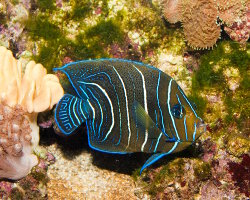
Semicircle angelfish
(Pomacanthus semicirculatus)
(Pomacanthus semicirculatus)
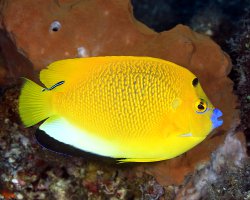
Three spot angelfish
(Apolemichthys trimaculatus)
(Apolemichthys trimaculatus)
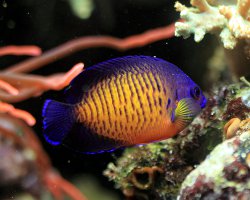
Two spined angelfish
(Centropyge bispinosa)
(Centropyge bispinosa)
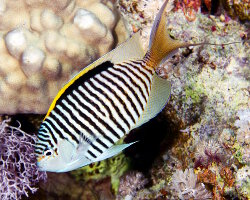
Zebra angelfish
(Genicanthus caudovittatus)
(Genicanthus caudovittatus)
Discover also
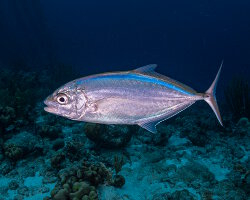
Blue runner
(Caranx crysos)
(Caranx crysos)
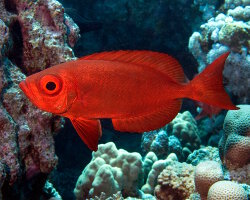
Common bigeye
(Priacanthus hamrur)
(Priacanthus hamrur)
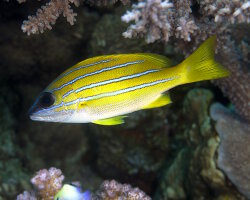
Common bluestripe snapper
(Lutjanus kasmira)
(Lutjanus kasmira)
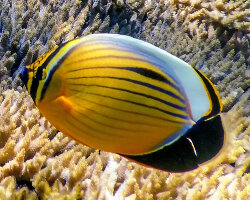
Exquisite butterflyfish
(Chaetodon austriacus)
(Chaetodon austriacus)
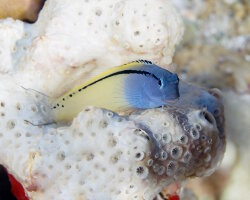
Red sea mimic blenny
(Ecsenius gravieri)
(Ecsenius gravieri)
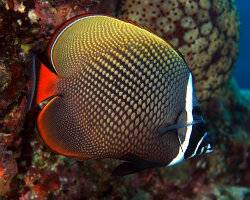
Redtail butterflyfish
(Chaetodon collare)
(Chaetodon collare)
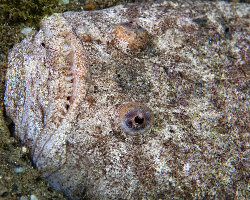
Star gazer
(Uranoscopus scaber)
(Uranoscopus scaber)
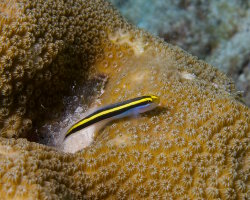
Yellowline goby
(Elacatinus horsti)
(Elacatinus horsti)
Our latestUpdates
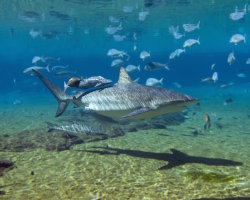
Monday, December 15th 2025
The dusky shark
Discover the dusky shark, one of the world's largest coastal sharks, and learn why this powerful predator is essential to marine ecosystems.

Friday, December 12th 2025
Christmas magic at Disney hotels
Experience the magic of Christmas at Disney hotels: enchanting decorations, giant Christmas trees, dazzling lights and a festive holiday atmosphere.

Friday, November 28th 2025
Disney Hollywood Studios, from Star Wars to Toy Story
Dive into the magical world of Disney's Hollywood Studios: Star Wars and Toy Story attractions and shows for the whole family.
Photo of the Day
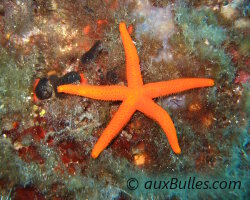
Etoile de mer rouge
(Echinaster sepositus)
(Echinaster sepositus)
